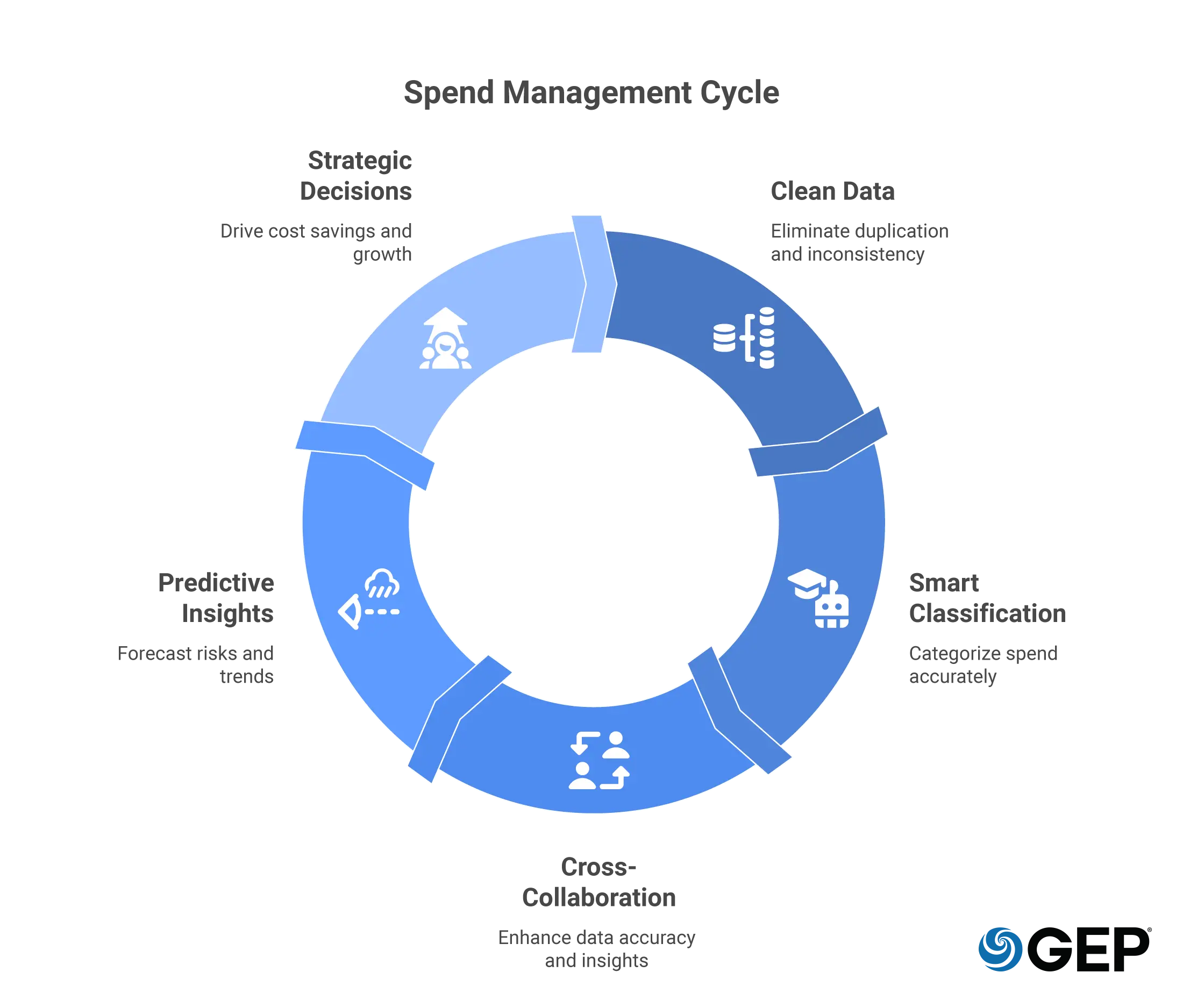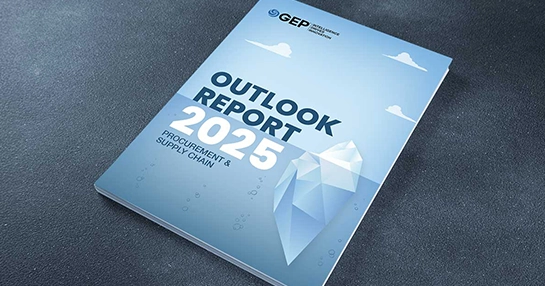
How AI Makes Spend Analysis More Accurate and Actionable
- Clean, centralized spend data gives you a single source of truth.
- Cross-functional collaboration makes spend analysis more powerful and actionable.
- Consistent analysis unlocks savings, strengthens supplier relationships, and builds resilience.
October 10, 2025 | Procurement Software 5 minutes read
Think about the last time you tried to pull together company spend numbers. Procurement had one version; finance had another; operations swore theirs was right. Supplier names were duplicated; invoices didn’t match purchase orders; categories were inconsistent. Frustrating, isn’t it?
This is why spend analysis is vital. When you can clean and consolidate data; when you can trust that it’s accurate and consistent; suddenly, decision-making gets sharper. Cost savings appear; risks become visible; and procurement plans line up with business strategy.
But — and here’s the catch — you can’t get there with spreadsheets alone. You need a spend analysis platform designed to bring order and insight.
Ready to turn messy spend data into actionable insights?
Explore how GEP’s AI-powered solutions can help
Understanding Spend Analysis Platform
At its core, spend analysis is the practice of collecting, cleaning, classifying, and analyzing your organization’s spend data. It sounds straightforward: just gather everything, organize it, and run the numbers. In practice? Not so simple.
Data is messy. It lives in multiple systems; it shows up in different formats; sometimes it’s wrong altogether. A single supplier can appear under three names. Categories get mixed up. Invoices don’t match contracts. Without structure, you’re stuck piecing together a puzzle where half the pieces don’t fit.
A spend analysis platform solves this problem: it centralizes data; applies consistent classification rules; and standardizes supplier information. Modern spend analysis platforms go further with dashboards, AI-powered categorization, and predictive analytics. Instead of reconciling spreadsheets until your eyes glaze over, you’re reading a clear story about where money is going — and why.
How to Implement Spend Analysis Across the Organization
Software is only part of the answer. To make spend analysis work, it has to be embedded across the company; it has to be used, trusted, and supported by everyone involved.
• Centralized Source of Spend Data
Start here. If procurement is looking at one report and finance at another, nothing lines up. Pulling all spend data into a single repository is essential; it creates a foundation of trust and eliminates the “my numbers vs. your numbers” debate.
• Clear, Customizable Classification Logic
Categories matter. If IT services are logged as “Consulting” in one department and “Technology” in another, you can’t see the big picture. Classification needs to be standardized — but also flexible enough to reflect how your business works. A good platform lets you do both.
• Collaboration Between Procurement, Finance, and Legal Teams
Procurement might lead, but spend affects everyone. Finance needs accurate data for forecasting; legal cares about compliance; operations depend on reliable supplier performance. If these groups don’t collaborate, the analysis will always fall short. When they do? The data becomes more valuable; the insights, more actionable.
Key Use Cases for Spend Analysis and KPIs
So, what happens once you’ve got the system running smoothly? Here’s where spend analysis proves its worth.
• Identifying and Prioritizing Cost Reduction Opportunities
Spend analysis makes inefficiencies impossible to ignore. Too many suppliers for the same category? Off-contract purchases driving up costs? The platform highlights them. Suddenly, you have leverage: consolidate, negotiate, reduce waste.
• Managing Supplier Risks and ESG Factors
Procurement today isn’t only about cutting costs. It’s about managing risk and meeting sustainability expectations. Spend analysis helps you monitor supplier compliance; track ESG performance; and catch warning signs before they turn into crises.
• Enhancing Sourcing and Category Strategy
With clear spend visibility, procurement can build strategies on facts, not assumptions. Which categories are driving costs? Which deserve more focus? Which suppliers should be strategic partners? The answers are in the data.
• Aligning Procurement Plans with Budgets
Budgets look neat in presentations; reality rarely cooperates. Spend analysis keeps plans tethered to what’s actually happening. If numbers start drifting, you can adjust early — not when it’s too late.
Eager to learn more on Agentic AI?
Get The Agentic AI Playbook to see how leaders are moving from automation to autonomy
Overcoming Common Challenges in Spend Analysis
It’s not all smooth sailing. Even with the right tool, challenges show up. Recognize them early, and you’ll avoid the usual pitfalls.
Break Down Data Silos with Feedback Mechanisms
Departments often guard their own data. The fix? Feedback loops: shared dashboards, open reporting, cross-team updates. The more the data flows, the more accurate the analysis becomes.
Boost Stakeholder Buy-in with Transparency
Data is only useful if people trust it. If teams think the numbers are wrong, adoption collapses. Be transparent: show how data is classified; share the validation checks; give people access to reports they can actually read.
Include Relevant Stakeholders
Leave out finance or legal, and the analysis will always be incomplete. Their input is essential; they spot gaps that others miss. Involve them from day one, not after the fact.
Review Spend Data Regularly
Spend data changes constantly. Markets shift; suppliers change; contracts expire. If you review once a year, you’re already behind. Regular reviews keep the data fresh; they keep your strategies current.
Benefits and Advantages of Spend Analysis
When you get spend analysis right, the payoffs ripple across the business.
• Reduce Maverick Spending
Off-contract purchases are small on their own; collectively, they’re expensive. Spend analysis makes them visible; once you see them, you can act and eliminate them.
• Optimize Supplier Relationships
With accurate data, you know which suppliers are delivering value and which are not. That makes it easier to negotiate better terms, consolidate, and strengthen key partnerships.
• Free Up Working Capital
Better visibility into payment terms and cash flow means more control. You can release capital tied up in the wrong places; that creates room for growth, innovation, or resilience.
• Reduce Supply Chain Disruptions
Suppliers don’t always perform consistently. By tracking their data, you can spot red flags early: delays, risks, compliance gaps. Catching these issues before they escalate reduces costly disruptions.
Make the Right Decisions
Accurate, consistent spend data analysis isn’t just a nice-to-have; it’s a competitive edge. A spend analysis platform brings order to messy numbers, builds trust across departments, and helps leaders make smarter, faster decisions.
If your teams are still wrestling with conflicting spreadsheets and clashing reports, maybe it’s time for a reset. GEP’s Spend Analysis AI Software can help centralize, clean, and analyze your data — so you can stop arguing over whose numbers are right and start acting on insights you can trust.
When you trust your data, you trust your decisions. That’s what real spend analysis delivers.




